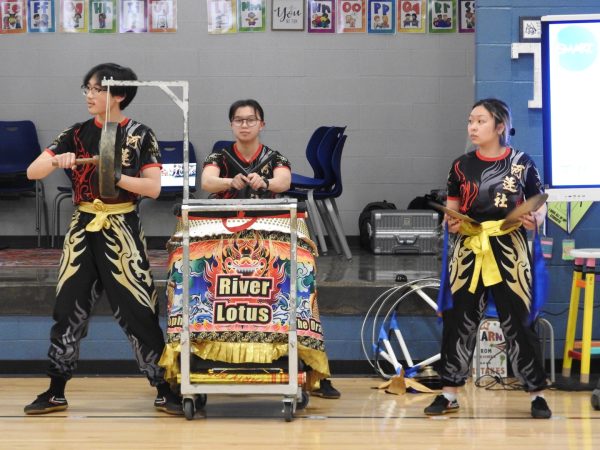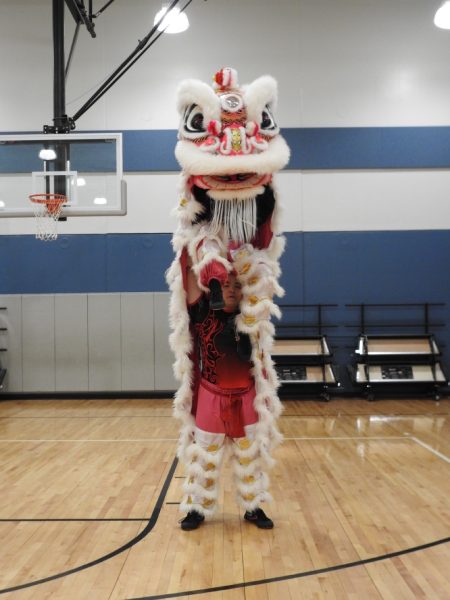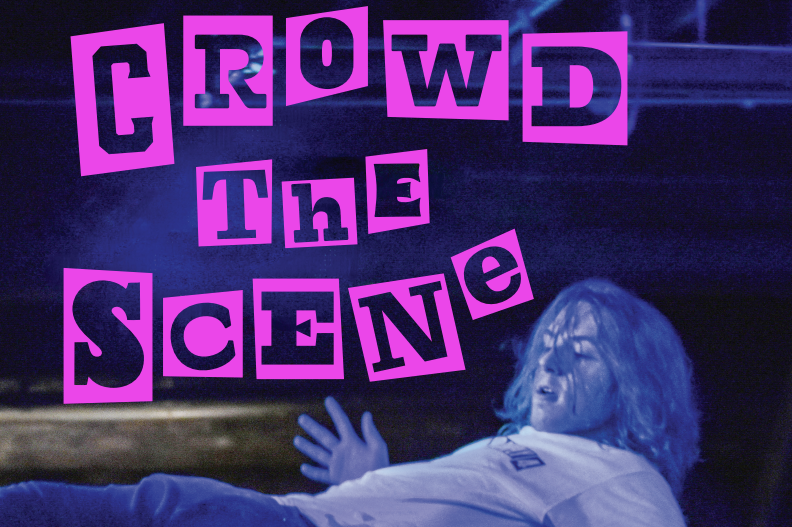The soft sound of bare feet on a colorful mat complemented the rumbling of the drums and the heartbeats of the dancers. They stepped in time and held a large metal hoop above their heads, tilting it back and forth in sharp movements. Looking at this rehearsal, one would never expect a group of eight teenagers in jeans and sweatpants to transform into a spectacular display of bright colors and coordinated steps.
The performance, known as lion dance, is a traditional dance that originated in China over 2,000 years ago before spreading throughout East Asia. Now, it unites students of many cultural backgrounds in Louisville — with some adjustments. Based in a Vietnamese temple in Louisville, River Lotus Lion Dance is a group of passionate youth dedicated to performing lion dance together.
Though they abide by the historical practices of the culture, the group strays away from traditional beliefs and emphasizes self-expression, strong interpersonal ties and breaking gender norms.
While original lion dances featured only men performing for Lunar New Year, River Lotus maintains a group majority made up of women — and finds ways to incorporate the dance throughout the year.
On Feb. 25, River Lotus began practicing for their upcoming show. One specific teen in the rehearsal stood out above the echo of the drums, holding the next step up from a metal hoop: the scaffolding of the lion’s head.
This dancer was Kevin Nguyen, 14, a freshman at duPont Manual High School, who practiced a step-step pattern alongside the other dancers while moving the lion head above his own. Again and again, step-step forward, step-step back. When he was not practicing the same motion, he was off to the side improvising his movements.
“When you freestyle, you just move with the flow,” Kevin said.
In lion dance, the two dancers who perform in the lion costume must be in tune with the movements of the other, which helps create a strong sense of community.
“It helped me connect with people I dance with because I think we’re just a group of friends,” Kevin said. “They’ve helped me control my feelings, my thoughts and made me a better person.”


Feb. 25, 2025
This closeness was apparent when watching them before their practice. Around 30 minutes before the rehearsal started, a couple of the River Lotus members gathered together to kick a soccer ball around the room. As the group played, laughter bounced off the walls about as much as the ball did.
This energy continued throughout the afternoon. Johnny Nguyen, 18, a student at the University of Louisville, and Kevin, practiced near each other, their movements different. But in an instant, when someone started playing a rhythm on the large drum off to the side of the mat, Kevin and Johnny fell in sync with the deep beat of the large drum.
Without even a shared glance, they began the same step-step motion while lifting the metal hoops above their heads. They tapped their feet on the floor, then lifted it to their knee and shifted their stance. Step, tap, lift, tap.
On the other side of the room, leading others in a different motion, was Katelan Nguyen, 20. Katelan has been leading River Lotus since the beginning of 2024, but she’s been performing lion dance and a member of the group since 2020.
“It’s kind of hard when you’re going from being everybody’s friend to being their teacher and their leader,” Katelan said.
The group’s previous leader, Alan Tran, never had to worry about this transition — the team only ever knew him as their leader.
As Katelan has grown, she works to emanate the care that Tran put into the group.
“He cared deeply for every member on our team and would always highlight mental health, as it often gets neglected,” Katelan said.
Although she has adopted many aspects of Tran’s leadership style, she has been forging her own way as the head of the group. When the team makes mistakes, she prioritizes taking a constructive approach.
“I try my best to take accountability,” Katelan said. “I try not to make my members feel like it’s all their fault.”
While Katelan’s leadership style has evolved, lion dance had an impact on her even before she became the captain of the group: it brought her closer to her culture and religion, not to mention the group of friends that have grown from it.
“I just spent more and more of my time with these people and also learning more about the culture and how it embeds with my own culture and really having self-identity as an Asian American,” Katelan said.
However, finding her sense of self wasn’t easy when she was one of the only Asian Americans in her classes at school.
“Growing up, I was surrounded by a lot of people that looked like me, and then towards middle school it started getting lower and then definitely in high school, I was very much the one person in my class that was Asian,” Katelan said.
She explained that growing up with people like her inspired her to become more involved with her culture later in life.
So, she started going to the Chua Tu An Temple to learn more about the customs specific to her religion. This proved to be difficult, as she couldn’t speak Vietnamese fluently.
“Whenever they were teaching me lessons in Buddhism, but they would speak in Vietnamese, it was kind of hard to get that connection,” Katelan said. “Lion dance was my English translation.”
Katelan used to perform with another woman. She always found this uplifting, since lion dance is a traditionally male-dominated activity.
“It always felt very empowering because you don’t commonly see a lot of women as pairs performing lion dance doing the crazy tricks,” Katelan explained. “A long, long time ago, it was frowned upon, like ‘women can only do instruments and not be allowed in the lion.’”
In the 2018 dissertation “Claiming Ritual: Female Lion Dancing in Boston’s Chinatown,” authors Casey Avaunt and Anthea Kraut write that women “have been excluded due to notions that menstruation contaminates the ritual purity of the practice and the belief that women do not possess the physical stamina and strength needed to perform these rigorous dances.”
The widely accepted idea was that, if women touched the lion while on their period, they would contaminate the purity of the lion head and contradict the good luck it brought.
Although more women are participating, lion dance is still a male-dominated field. River Lotus is changing this norm.

March 21, 2025
As Katelan created more space for other members of the group to try a new role in lion dance, she spent less time focusing on playing the drums.
“Whenever I’m put on drum show duty or just drum in general, I get a little anxious and then it messes up my drumming,” Katelan said.
Despite this, at their Wilkerson Elementary School performance on March 21, Katelan was there, striking a large drum in perfect timing.
Eric Dong, 20, a student at the University of Louisville, and Kevin donned the full lion costume and hopped from foot to foot in time with the symbols and the drum. The lion was white with pink accents and small tassels covering every inch. As the lion pranced up and down the aisles of the bleachers, the music changed rhythms and flowed through the room. Many of the kids got up from their seats to touch the lion and pat it on the head. In response, the lion would blink and shake its ears.

…
Through the obstacles she has faced in lion dance, Katelan has gained a piece of wisdom that she shares with others: people aren’t paying as much attention to your each and every movement as you might think they are.
“It’s like starting out in the gym. You think everybody’s watching you, but in reality nobody’s watching you.” Katelan said. “You can progress at your own pace.”
Each team member is at a different level, and they rely on each other and Katelan to succeed at every rehearsal and performance.
From Katelan’s evolving role as a leader and Kevin’s growth as an individual, River Lotus provides local youth with a forum to express themselves.
The group’s balance between traditional, cultural practices and a focus on stronger mental health and inclusion of women as major role-players mirrors the harmony and connection between River Lotus’ teammates.
By providing an outlet for a young group of performers to grow as leaders and change-makers, River Lotus has also bonded its members into a large group of friends who simply love what they do.
“I think, definitely, friendship is a big driving force why I keep doing it and why I’m still here,” Katelan said. “It’s nice sometimes putting on a uniform, it feels like a supersuit.”












